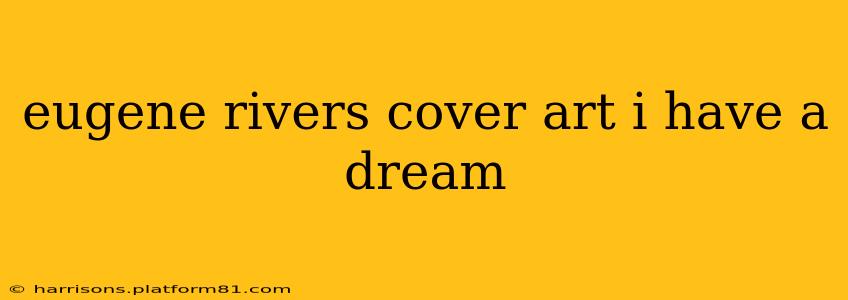Eugene Rivers' interpretation of Martin Luther King Jr.'s "I Have a Dream" speech isn't tied to a single, definitive piece of cover art. Instead, the impact of his work and his connection to the speech's legacy manifest in various ways. To understand the visual representation of Rivers' engagement with King's message, we need to consider different angles. This exploration delves into what we might expect from such artwork and how Rivers' broader work visually embodies the spirit of the dream.
What Might Eugene Rivers' "I Have a Dream" Cover Art Look Like?
If we were to imagine a hypothetical cover depicting Rivers and his connection to King's speech, several visual elements could emerge:
-
A powerful portrait of Eugene Rivers: The image could focus on Rivers' intense gaze, conveying the gravity of his commitment to social justice and his continued fight for racial equality. The portrait could be in black and white, evoking the era of the original speech, or in vibrant color, representing the ongoing struggle.
-
Symbolic imagery: The cover art might incorporate symbolic imagery associated with the Civil Rights Movement, such as a raised fist, a marching crowd, or a silhouette against a sunrise. These visuals could add layers of meaning, hinting at the ongoing fight for civil rights and the hopes for a more equitable future.
-
A collage of images: The cover could feature a collage combining images of Rivers, scenes from the March on Washington, and perhaps powerful quotes from the speech. This technique could create a visually rich representation of the speech's lasting influence.
What are Some Visual Interpretations of the Speech that Align with Rivers' Work?
While a specific cover art piece depicting Rivers and the "I Have a Dream" speech may not exist, the spirit of that message is vividly present in artistic depictions of the Civil Rights Movement and the ongoing fight for social justice. Consider images that depict:
-
The strength and resilience of the Civil Rights Movement: Powerful photographs and paintings from the era itself offer visual representations of the struggle. These works often show the determination and unwavering spirit of those who participated in the movement, and align with Rivers' own advocacy.
-
Contemporary art depicting social justice: Many contemporary artists continue to address themes of racial equality and social justice. These pieces, often using diverse artistic mediums, provide a modern lens through which to view the legacy of King's speech, reflecting the sentiments Eugene Rivers actively supports.
How Does Eugene Rivers' Work Visually Reflect the "I Have a Dream" Speech's Message?
While we cannot pinpoint a specific cover, we can understand Rivers' visual connection to the speech through his actions and public presence:
-
His public speaking and activism: Rivers' powerful speeches and public engagement are, in themselves, a visual representation of his commitment to the dream. His passionate delivery and unwavering dedication serve as a contemporary visual echo of King's message.
-
His community engagement: His involvement in community initiatives and his dedication to social justice are visible through various channels – photos and videos of his work within communities directly reflect the ideal of building a more just and equitable society, fulfilling the spirit of the "I Have a Dream" speech.
In conclusion, while a specific piece of cover art featuring Eugene Rivers and the "I Have a Dream" speech may not exist, the spirit of the speech's message is deeply embedded in his life's work. The visual representation lies not in a single image but in the broader context of his activism, his community engagement, and the ongoing struggle for racial equality. His work serves as a vibrant, contemporary embodiment of the enduring legacy of King's powerful words.
